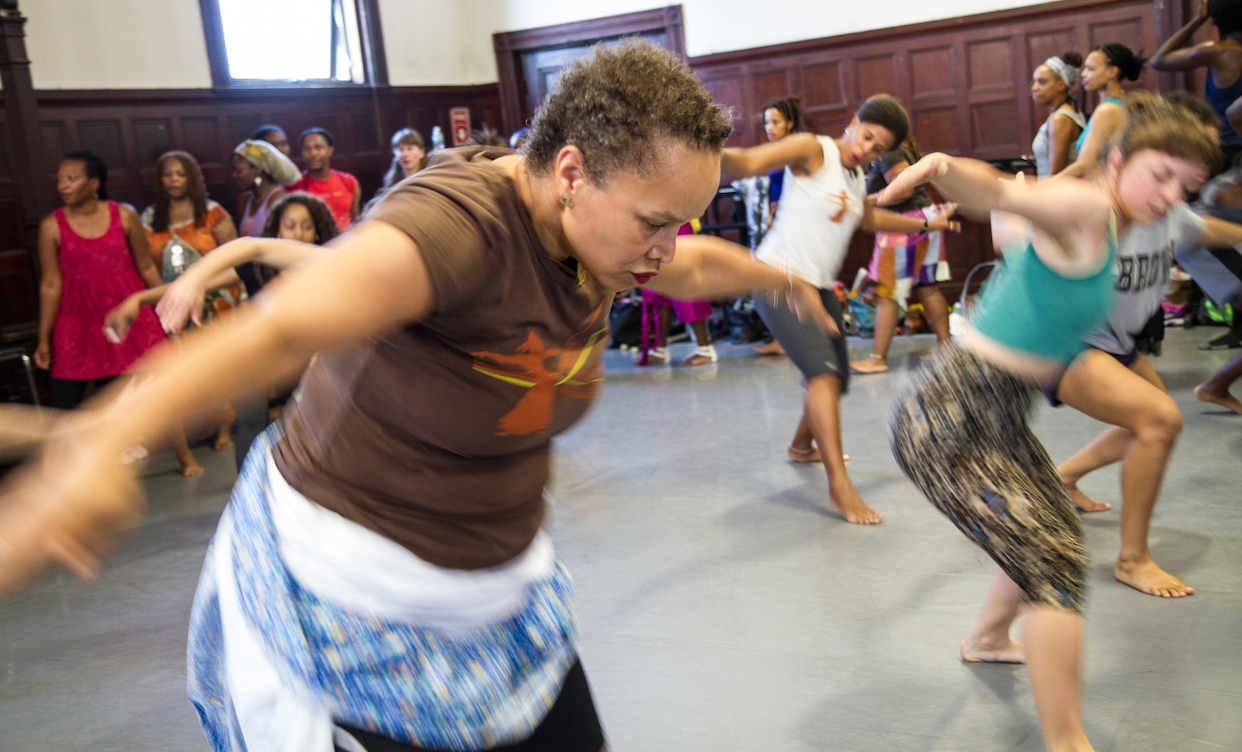Photo by Jason Pramas
Movement and the immigrant experience at the region’s second home for countless cultures
Editor’s Note
Two years ago, we commissioned Micaela Kimball to explore the role of dance in immigrant communities in Boston. A central focus of this coverage was the Dance Complex, an iconic Cambridge school and gathering place where a kaleidoscopic mix of students and teachers congregate daily. The resulting research, much of it immersive, has led to several features and interviews that cover a range of experiences, like the class led by dancer Jean Appolon, who explained that upon coming to Boston from Haiti 25 years ago, “Dance was the only therapy I had. … I felt that if I couldn’t dance I would have shut down.”
As Kimball writes: “Conversations and contemporary big media discourse have largely been centered on critiquing the current administration’s politics on immigration that aim to discriminate and deport. And while there has been substantial coverage of people using art to confront these policies, the vital role of cultural spaces often gets lost in the discussion.” The Dance Complex, like other havens for the arts but on a regionally incomparable scale, supports immigrant populations of all kinds and resists discrimination and negative cultural stereotypes.
In a time when institutions like this are especially important, we are excited to present this year-plus-in-the-making look at a Cambridge staple that celebrated its 25th anniversary in 2017 while Kimball was conducting interviews and sitting in on classes. -Chris Faraone, BINJ Editorial Director

It’s a Monday night at the Dance Complex in Central Square, home of Greater Boston’s major go-to dance and cultural center, and the place is buzzing with activity. Dancers of all different backgrounds chat in the lobby while they stretch after classes. Kids run around chasing each other, hyper from the upbeat energy picked up from their parents and teachers.
Volunteers from the studio’s work-study program struggle to multitask as they welcome incoming dancers, process payments from teachers, and schedule rehearsal space in a paper binder that could pass for a high school biology notebook (they recently upgraded to a computer-based system).
Outside, a few drummers from a West African dance class linger in the entryway, smoking cigarettes and talking in Bambara. In a few minutes they’ll join a cohort of other musicians from West Africa—Mali, Senegal, Ghana, among other nations—upstairs to play live. The rhythms from their drums will be heard from blocks away, all as light from the class illuminates the building and Mass Ave below.
More than just a top-notch multicultural hub for entertainment, the complex is a “safe space” for its large international and immigrant artist base. In these walls, many feel connected to their native cultures and are able to forge new homes and communities that provide opportunities and access for professional and personal development.
Sidy Maiga, a master Malian percussionist who was the first musician from his country to attend Berklee College of Music, played drums in a West African class at the Dance Complex for years. He says that drumming helped him connect when he first moved to the States and also helped him maintain ties to his home culture.
“I still love and miss Mali [now],” Maiga says, “but I don’t miss it when I’m playing drums, because I get to share my music and culture with people.”
Michel DeGraff, a Dance Complex regular who frequents a Haitian dance class led by popular instructor Jean Appolon, says dance and music are his “bridge” between Haiti and the US.
“Having this rainbow of dancers come together in motion in this space allows Boston and Haiti to become one in such beautiful harmony,” he says. DeGraff, an MIT professor of linguistics and director of the MIT-Haiti Initiative, adds, “This is a space where you can be in Boston and, at the same time, feel so deeply rooted in the best of what Africa through Haiti means to you and to the rest of the world.
“The music, the drumming, and the camaraderie—they all contribute to forging unity among both Haitians and non-Haitians, across time, space, languages, religions, ethnicities, genders, and so many other dimensions.”
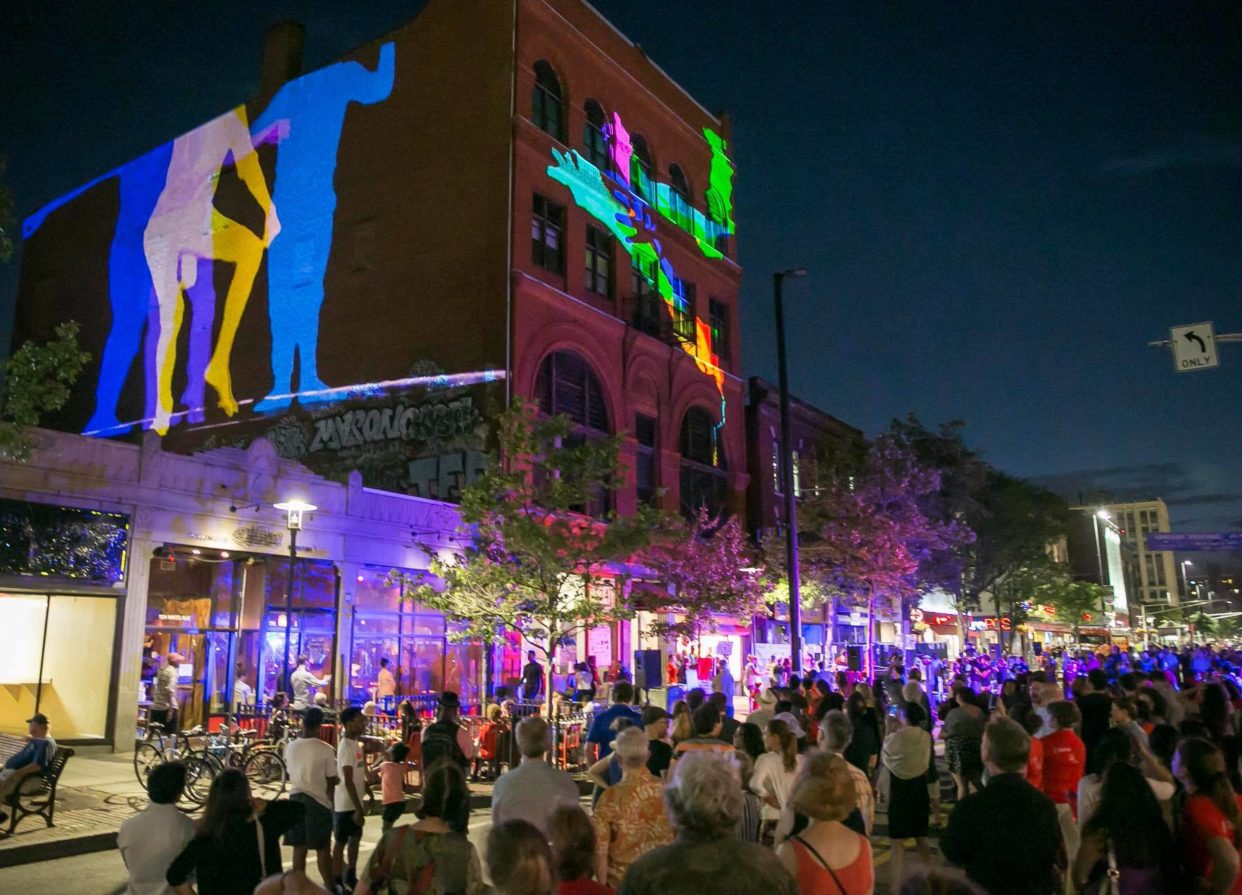
Global charm
Dance Complex director Peter DiMuro likes to boast that “the world lives at the Dance Complex.” “Each studio could be a different country at a different time of day,” he says. “If I were to walk from the top floor down at 6:30 pm on a Monday, I could go from modern dance, to capoeira, to kids’ flamenco, to rueda, all the way to an African class.”
A plethora of languages are spoken—Spanish, Portuguese, Bambara (the most widely spoken language in Mali), and others blend in harmony, creating a unique ring through the hallways, stairwells, and seven studios that make up the space.
All the noise and vibrancy can make you forget you’re in the US. The place feels like a nightclub in Havana or Lagos. This is far from a typical weeknight in Mass.
DiMuro notes that the complex’s global charm is also a byproduct of the area’s counter-culture at large: “I always say there are three places in the world that the Dance Complex could exist,” he says. “Berkeley, California; a town in Arizona called Sedona [a spiritual hub of sorts]; and Cambridge. In these three locations there’s a certain kind of rebel spirit that exists.”
Leslie Salmon Jones, who teaches Afro Flow Yoga at the Dance Complex, says that when she first moved to Boston, “a lot of people of color were saying there’s so many racists here, and it has this reputation of being extremely segregated. One of the great things about Cambridge and the Dance Complex,” she adds, “is that it does unite people together from all over. I haven’t felt that division here.”
The institution’s politics, a commitment to social justice and especially immigration issues, are somewhat unintentional, but rather reflect a consistently resilient and responsible history.
“The Dance Complex is the result out of what a few people could make out of an impossible situation,” DiMuro says. Originally called Joy of Movement Center, it was almost forced to close its doors in the early ’90s due to hardship. Determined to see the studio survive, a group of local dancers led by Rozann Kraus rallied and garnered enough financial support to stay open. Dancers reclaimed the space just before it was seized.
In the years since, the Dance Complex has become a top-notch studio, considered an essential stop for locals as well as professionals coming through Greater Boston. That overall recognition aside, the community is enduringly committed to self-expression.
“We’re like this subterranean, bohemian, nonglitzy icon,” says DiMuro. “At the Dance Complex you’ll find lawyers and doctors dancing next to artists—that blows my mind. It’s a place where professional choreographers traveling all over world come and dance and train next to everyone else, which to me is diversity in a very unique way in the dance world.”
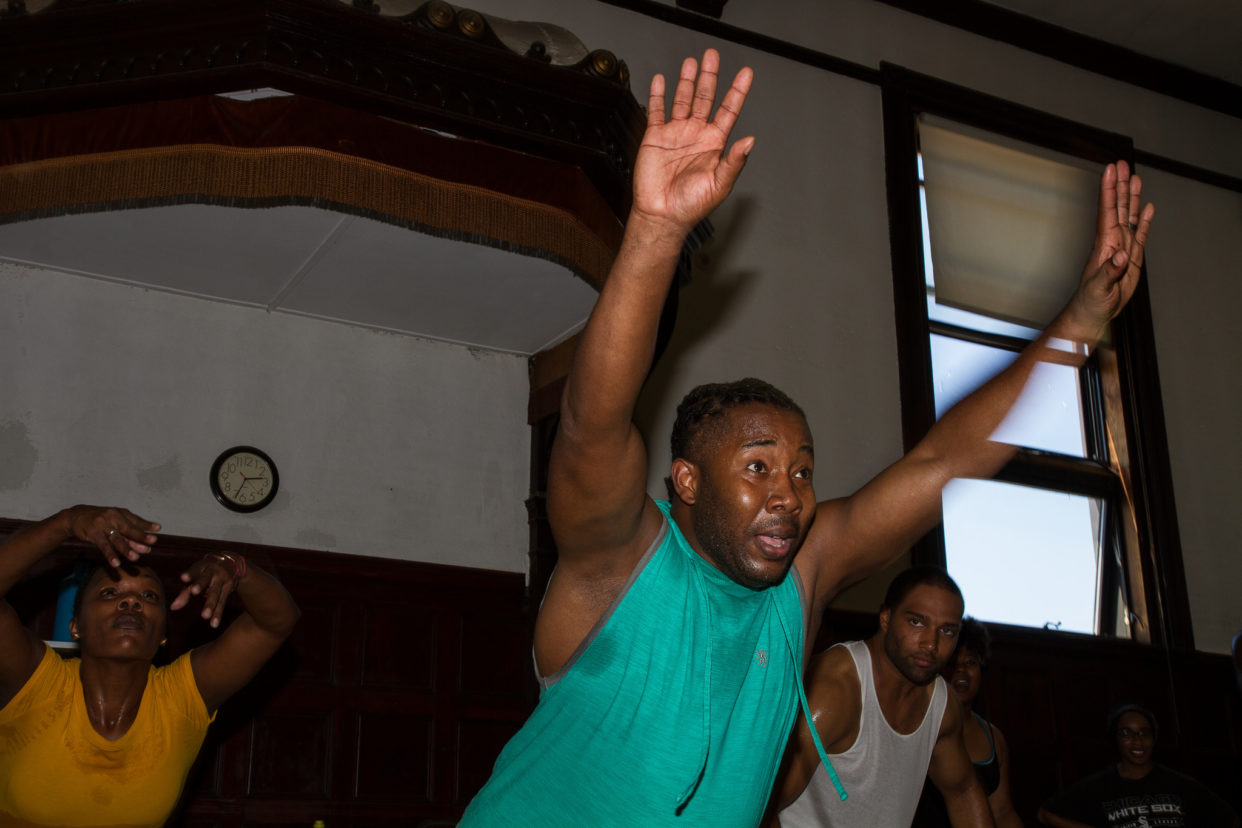
No room for shyness
Just before Port-Au-Prince native Jean Appolon’s Haitian folkloric class every Saturday, drummers hang out on the sidelines of the largest third-floor Dance Complex studio, sitting with their instruments and chatting. Many are of Haitian descent and sport fun, flashy, and funky gear and footwear, all complemented by gold jewelry in confluence of Caribbean-American style. Dancers waltz in decked out in tight duds or goddess garb and casually toss their bags aside before greeting Appolon and their fellow dancers with a kiss on the cheek. For many, this has all become routine—like “going to church,” as one dancer put it. Some of the people here have showed up every week for more than five or, in some cases, even 10 years.
After a rigorous half-hour warmup of loose, pulsating Afro and modern dance and fitness, the class bursts into a chorus of conversations about everything from weekly work stressors, to Saturday night plans, to current events like the appointment of Brett Kavanaugh to the Supreme Court and President Donald Trump’s war on immigrants. In getting to discuss such topics around friendly faces, many dancers say the class offers support and stress relief.
Once the room is warm, the teacher summons everyone’s attention: “There’s no room for shyness here,” Appolon instructs with his trademark serious smile. “Make sure you say hi to someone next to you.”
Everyone pairs off in groups of four or five—some with friends, others with folks they’ve never met. Suddenly, we’re in synchronistic lines, dancing toward the drummers. The combination of the energetic rhythm and sophisticated yet accessible movements serve as solid fundamental training, but also help with healing. Through this place, they stay connected to the cultures they were raised in, whether during an initial move to the United States, or even a much longer migration.
Appolon says that when he first moved to Boston as a boy, he remembers feeling deeply sad about leaving traditional Haitian dancing and music. Gone were the creative nuances of his beloved homeland—“the noisiness,” as he calls it, of Haiti, which he further describes as “this beautiful sound, the hustle and bustle of markets and people selling things in the street; roosters crowing … the smell of the land.”
“I first came [to Boston] from a hot Caribbean country in the middle of June,” he adds, “but there was still some coldness. The weather was not the same; the culture was not the same; I didn’t see anyone in the streets; there was no big noise or activity [like in Haiti]. … I wanted to be in the heat of things. … I was also like, Where am I gonna find drums like in Haiti to dance to in Boston?”
I started hearing drums from afar at the Dance Complex, and I was like, Wow, I can breathe again. Finding the Dance Complex was like having the sky open up to me; I really cherish this place.”
One student of Appolon’s recalls a time she took a special class he offered at the Irish Immigration Center. The experience, they say, “gives you a bit of home in a country where you don’t find that too much,” adding that “a lot of people try to assimilate and they forget about back home. I was the opposite; I was seeking something that could show me what my culture was. In that search I came upon this class.”
Music and dance can also help communities counter negative stereotypes in dominant culture and media. For DeGraff, the MIT linguist and regular Appolon student, the class values and makes visible the beauty of Haitian society and culture. As an example, DeGraff notes his own son.
“Jean’s classes offer deep dives into Haitian culture and history, all the way back to our African roots,” DeGraff says. “Because Nuriel [my son] has been dancing in Jean’s class since age two (he’s now 14), he knows that much of the news about Haiti in the mainstream media and even in children’s picture books is part of a brutal neocolonial propaganda machine. Now he understands that what he knows to be true of Haiti is radically different from the trumperies of the dominant culture, radically different from what it says or doesn’t say about us.
“Jean’s classes, alongside our ongoing discussions about Haiti and its unique place in world history, have helped him become very self-aware with an acute sense of media literacy.”
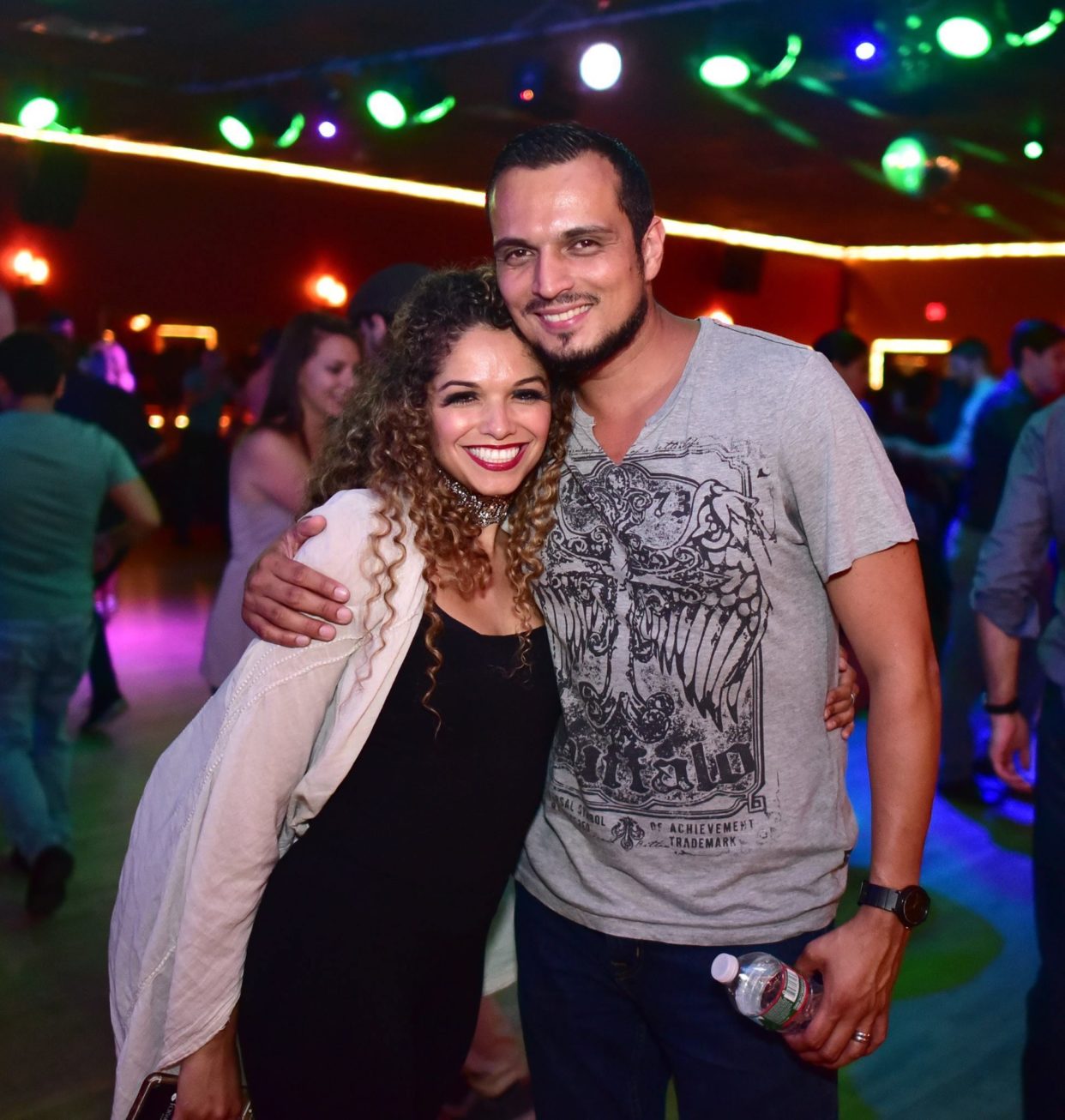
Dance revolution
Johnny Giraldo is a native of Medellin, Colombia, and teaches salsa and Latin dance at the Dance Complex. A cofounder of the successful dance company Salsa y Control, he credits folkloric dance from his homeland, which he says has allowed him to “stay connected to my roots and represent my country,” with giving him “a sense of pride.”
Giraldo is familiar with the power of salsa in giving Latinx folks a sense of home.
“For people that grew up listening to [salsa] music and being away from it [in their home countries], you’re able to transport yourself in time to wherever you came from,” he says. “That you get to experience that here [in the US], it’s a good way to come home.”
Giraldo’s story connects to the roots of salsa in New York, which he notes started out not simply as a musical genre, but as a movement through which people found their identity and “connected to their roots.” It’s a theme identified by dance professor Juliet McMains in her 2015 book, Spinning Mambo Into Salsa: Carribean Dance in Global Commerce.
“Many early salsa fans [in NYC] were second generation immigrants who, coming of age during or after the Civil Rights Movement, began to question their assimilation into American culture and turned to salsa as a means of reconnecting to their cultural heritage,” McMains writes. “Salsa music was more than just entertainment for … working class Latino adherents … Salsa was one of the central tools through which Latino identity and political consciousness were forged in the late 1960s and 1970s, a period I refer to as the salsa revolution.”
In the United States, music and movement have additionally protested discrimination against immigrants by shining light on their accomplishments. In turn, some say such demonstrations have provoked a sense of cultural appreciation among nonimmigrant groups. Dancers note that diverse dance relationships are about more than merely entertainment—they can transform value systems.
Maylena Chaviano, a native of Havana, Cuba, who has taken classes at the Dance Complex and taught with Masacote Entertainment, a Latin dance school in East Cambridge, says, “In Cuba, art in general is taken very seriously; if you say you are a dancer, it’s like saying you are a lawyer or a teacher. Here [in the US], I say I’m a dance instructor and people are like, Oh, that’s fun, and I’m like, Yes, but it’s a profession [too].”
“What got me hooked on Masacote,” Chaviano adds, “is that they preach the same philosophy that is similar to Cuba, which is that it’s a serious social dance, not just a regular hobby. It can be applied to your life, awareness, to your sense of self.”
Chaviano, who danced professionally in Havana before moving to the States (she now lives in Canada), also illustrates the power of the arts in keeping international dancers connected not only to countries and cultures, but to themselves.
“To me, dance is such a global thing that even if you are dealing with so many uncertainties and emotional ups and downs, as an immigrant dancer, you know you have that one element that you can count on and where you can find like-minded individuals. To me, with dance you can be part of a community regardless of where in the world you are at.”
As dancers and musicians from all genres have pointed out forever, music by nature allows people to communicate in ways that words can’t. For a community with a large international base and countless language barriers, the ability to connect nonverbally is particularly relevant.
Dance, says Chaviano, is “a different type of communication.” “Being an artist,” she says, “dance is about being able to open up different things inside of you in regular life and transmit that through music and moves.”
“What dance does is get words out of the way,” says DiMuro, the Dance Complex director, noting that nonverbal communication is especially prevalent in African classes, in part because of the explicit call and response portion. “You are communing on this human visceral level; there is no confusing the use of a word or translation or tone of something. What happens with dance in general, exemplified in African and in Haitian class, is there is communication through movement, which does so much more dimensionally to the way people communicate.
“To me that’s very exciting. It’s not as prevalent in modern and other dance.”
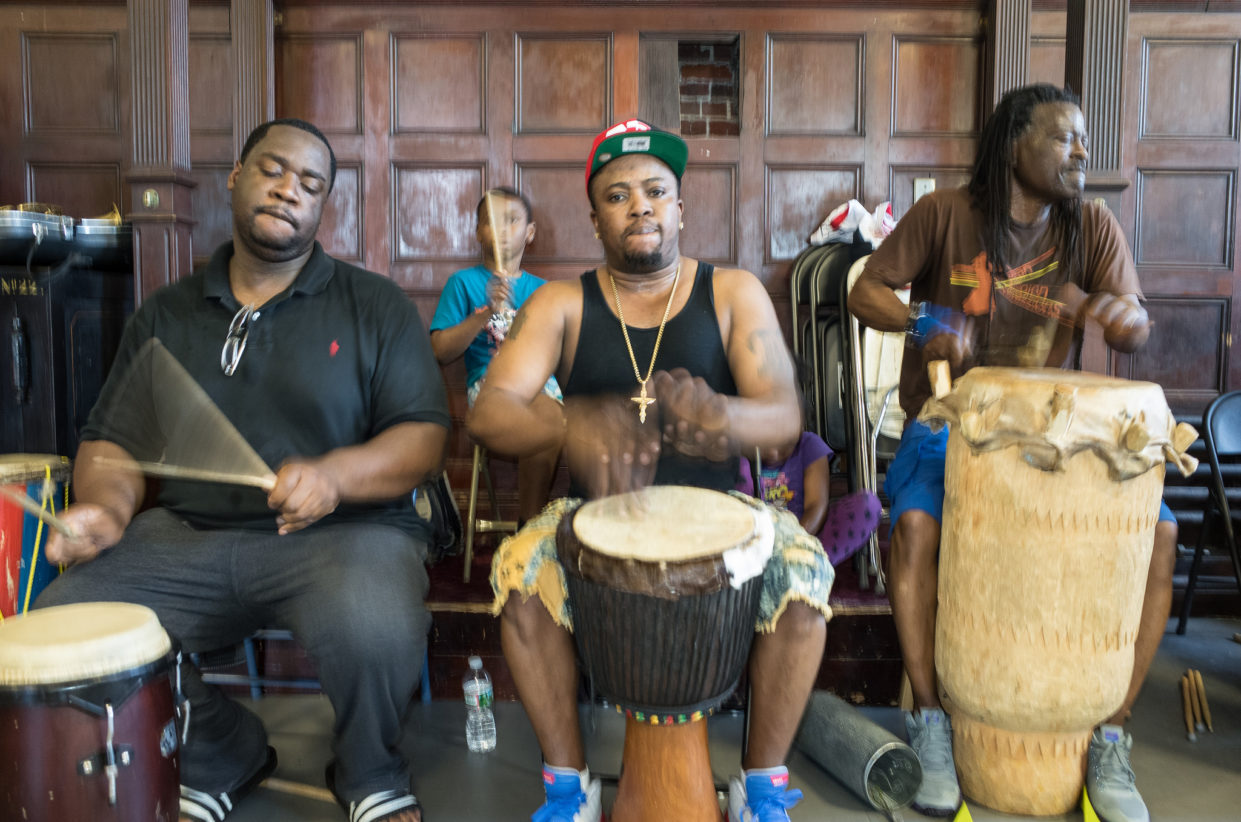
Daily nutrition
Over the past several years in Cambridge, African dance has blossomed into one of the most popular and prominent subcommunities at the complex, with classes being offered by teachers hailing from Mali, Senegal, Ghana, and other West African countries seven nights a week. One frequent attendee, Mckerson Prevalius, who danced and taught various classes here for years, describes the African dance scene here as “the blood of the Dance Complex.”
On this evening, like most others, dancers are decked out in bright and intricately patterned African wax cloth skirts, which move in unison with the percussion. Their bodily expressions are intricate, as vibrant and deep as the colors of their garments.
When dancers get close to the drummers—a few are merely inches away—the energy around the room appears to rise, the bodies of participants vibrating like the instruments they’re channeling. Behind the more seasoned folks, newbies in their yoga pants or workout gear struggle along, some people mesmerized by the complexity of the movement afoot.
Amazingly, there’s a call-and-response in play not only among dancers and drummers, but also between drummers and pedestrians out on the street. It’s been common for heads strolling down Mass Ave to follow the sound of the drums and peek into the studios. Heads have floated in on multiple occasions, happy to watch along in awe. Seeing this in motion, it’s easy to comprehend why African dance has attracted one of the biggest communities at the entire Complex—the drums, the deep creative movements, the representation.
“We have more African-born teachers here under one roof than anywhere else in the country,” DiMuro says. “To me it’s amazing how everyone has found a home.”
LaLa Roberts, a medical student from South Africa who has danced professionally and recreationally at the Dance Complex for years, says her experience with dance there has helped her form a connection with her native South Africa and expanded her identity and understanding of the entire continent.
“I cannot recreate Africa anywhere else,” Roberts says, “but through African dance and drum [here in the US], this is the way to do it; it’s self-sustaining. Dance helps me keep connected to Africa. When I left South Africa I was a South African. When I came to America I realized I’m African, I’m not just South African.”
Roberts also says that “African dance is a healer for all of us—not just for Africans or blacks, but everyone. … Drums,” she adds, “tap into an inner psyche that a lot of people who are non-African didn’t think they had, so they feel connected. This is why I think African dance is not just for Africans; it’s just that for Africans we need it more because we are removed from the continent. It’s like our daily nutrition.”
Says one American-born woman who attends both West African classes and Appolon’s Haitian class: “I noticed how we were all from different backgrounds … and even though there was no talking, no conversation, the language we all speak is dancing.
“That, for me, is connection to humanity.”
Local appeal
Spaces like the Dance Complex that boast top-notch arts, community, and diversity are a rarity in the dance world at large—even in progressive Greater Boston. While there is a bustling contemporary culture in the Hub, artists also regularly criticize what many see as a lack of support and opportunity. The scene, they say, often forces serious artists to decamp for more artist-centric cities.
For multicultural arts, said lack of support is even more stark; many with international or multicultural identities have problems accessing sufficient funding, especially compared to fine arts programs at legacy institutions. In the midst of all those difficulties, many artists view the Dance Complex as a particular “cultural gem,” one that stands out as an exception to tired norms.
“Without the Dance Complex,” says Leslie Salmon Jones, the Afro-Flow Yoga instructor, “Boston would be so uninteresting. When I first moved here from [New York City], I was terrified I would lose the cultural connection [there]. So I was so relieved when I found the Dance Complex; it’s … like one big family that expands.”
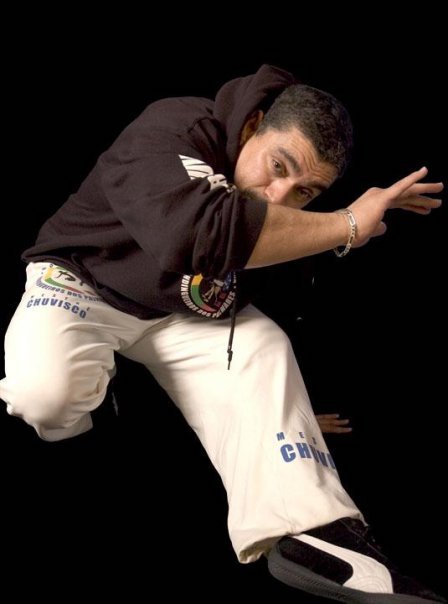
There’s a practical support aspect as well. The Cambridge refuge offers both teachers and dancers affordable, accessible space at a time when longtime rehearsal spots like the EMF studios a few blocks away are replaced by luxury housing. In addition to part-time and full-time staff, the building is run by a bank of volunteers who clean and manage the front desk in exchange for free classes.
Some Dance Complex artists credit the space with boosting their professional development. One student who studies capoeira with Brazilian instructor Mestre Chuvisco says, “the Dance Complex is our home; this is our roots. … It’s really important for the livelihood of our group. It’s also just a really good community and meeting space; before and after classes people socialize in the lobby.”
To an outsider, Chuvisco’s capoeira class may seem somewhat overwhelming—capoeiristas dressed in all white, a kickass fitness warmup guaranteed to leave you so sore that you may not be able to walk for a week. But for many who come regularly and make it through the “roda,” which encompasses the last half-hour and is considered the heart of the engagement, this class and community (like other capoeira groups around the area) can become fully immersive, where students don’t just train in the physical movements and music, but also learn the language, eat Brazilian food, and are introduced to interconnected Afro Brazilian dances like samba and forro. They also often interact with members of the greater Brazilian community in New England and elsewhere through festivals and events.
Those who play capoeira here value creative expression and preservation of the African (specifically Angolan) culture of slaves in Brazil. Chuvisco insists that his students learn how to speak and sing in Portuguese; serious practitioners often become fluent.
“When I teach, I feel I’m always at home—whether I’m in the US or in Brazil.
“Every time I go back, to be in touch with everyone who taught me capoeira there, it revives this energy.”


